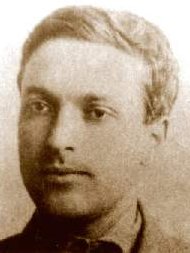
Lev S. Vygotsky
|
Théories socio-culturelles
- Vygotsky, L.S. (1978), Mind in Society. The Development of Higher Psychological Processes. Edited by M. Cole, V. John-Steiner, S. Scribner & E. Souberman. Cambridge, Massachusetts: Harvard University Press.·
- Collins, A., Brown J.S. & Newman, S. (1989) Cognitive apprenticeship: teaching the craft of reading, writing and mathematics. In L.B. Resnick (Ed.), Cognition and Instruction: Issues and Agendas (453-494).
- Hillsdale, N.J.: Lawrence Erlbaum Associates.· Engestrom, Y. (1987). Learning by Expanding, Helsinki, Finland: Painetu Gummerus.
|

Herbert H. Clarck |
Constuire une comprehension partagée
- Clark, H.H. & Brennan S.E. (1991) Grounding in Communication. In L. Resnick, J. Levine & S. Teasley (Eds.), Perspectives on Socially Shared Cognition (127-149). Hyattsville, MD: American Psychological Association.·
- Roschelle, J. & Teasley S.D. (1995) The construction of shared knowledge in collaborative problem solving. In C.E. O'Malley (Ed), Computer-Supported Collaborative Learning. (pp. 69-197). Berlin: Springer-Verlag·
- Baker, M., Hansen, T., Joiner, R. & Traum, D. (1999) The role of grounding in collaborative learning tasks. In P. Dillenbourg (Ed) Collaborative learning: Cognitive and Computational Approaches (pp. 31-63) Oxford: Pergamon.
|

Naomi Miyake |
Conflit socio-cognitif & régulation mutuelle
- Doise, M., Mugny, G, & Perret-Clermont, A.-N. (1975) Social interactions and the devlopment of cognitive operations. Europen Journal of Social Psychology, 5, 367-383. ou Doise, W. & Mugny, G. (1984) The social development of the intellect. Oxford: Pergamon Press.·
- Miyake, N. (1986) Constructive Interaction and the Iterative Process of Understanding. Cognitive Science, 10, 151-177.
|

Saul Greenberg |
CSCW
- Gutwin, C. & Greenberg, S. (1998) The effects of workspace awareness on the usability of real-time distributed groupware. Research report 98-632-23, Department of Computer Science, University of Calgary, Alberta, Canada·
- Dillenbourg, P. & Traum, P. (1999). Does a shared screen make a shared understanding ? Proceedings of the Third CSCL Conference, pp. 127-135, Stanford, Dec. 1999,·
- Baker, M.J. & Lund, K. (1996) Flexibly structuring the interaction in a CSCL environment. In P. Brna, A. Paiva & J. Self (Eds), Proceedings of the European Conference on Artificial Intelligence in Education. Lisbon, Portugal, Sept. 20 - Oc. 2, pp. 401-407.
|

Lucy Suchman |
Cognition située et communautés d'apprentissage
- Suchman, L.A. (1987) Plans and Situated Actions. The problem of human-machine communication. Cambridge: Cambridge University Press.·
- Cognition and Technology Group at Vanderbilt. (1992) The Jasper series as an example of anchored instruction: Theory, program description, and assessment data. Educational Psychologist, 27, pp. 291-315.·
- Lave, Jean, & Etienne Wenger. 1991. Situated Learning: Legitimate Peripheral Participation. Chapters 1 (Legitimate Peripheral Participation, pp. 29-43) and 2 (Practice, Person, Social World, pp. 47-58). Cambridge, UK: Cambridge University Press.·
- Dillenbourg, P., Poirier, C. & Carles, L (à paraître) : Communautés virtuelles d'apprentissage : e-jargon ou nouveau paradigme. In A. Taurisson et A. Sentini (Eds). Les communautés virtuelles d'apprentissage. Presses Universitaires du Québec.
|

Saint Thomas |
Efficacité de l'apprentissage collaboratif
- Salomon, G. & Globerson, T. (1989) When teams do not function the way they ought to. International journal of Educational research, 13 (1), 89-100.·
- Dillenbourg, P., Baker, M., Blaye, A. & O'Malley, C.(1996) The evolution of research on collaborative learning. In E. Spada & P. Reiman (Eds) Learning in Humans and Machine: Towards an interdisciplinary learning science. (Pp. 189-211). Oxford: Elsevier.·
- Slavin, R.E: (1983) Cooperative learning. New York: Longman.
|





